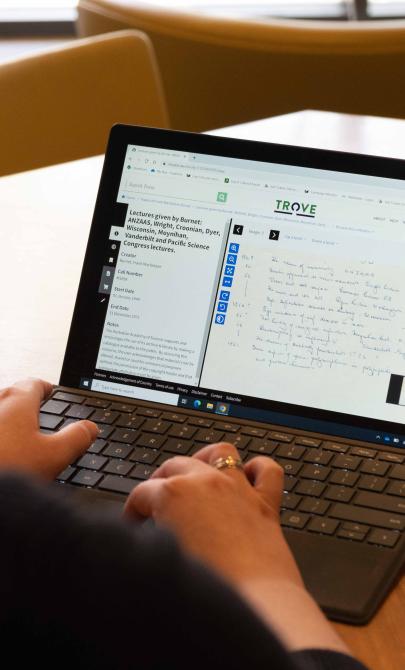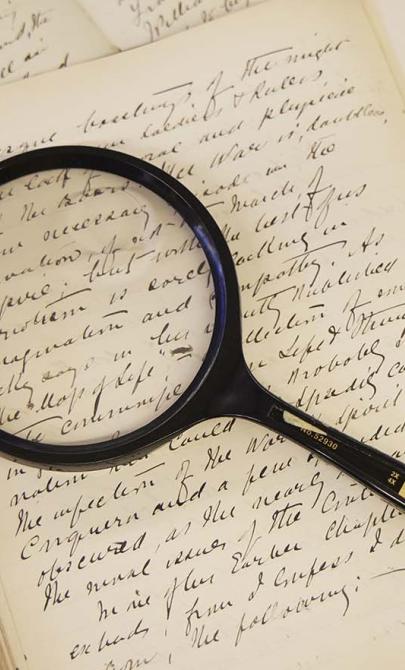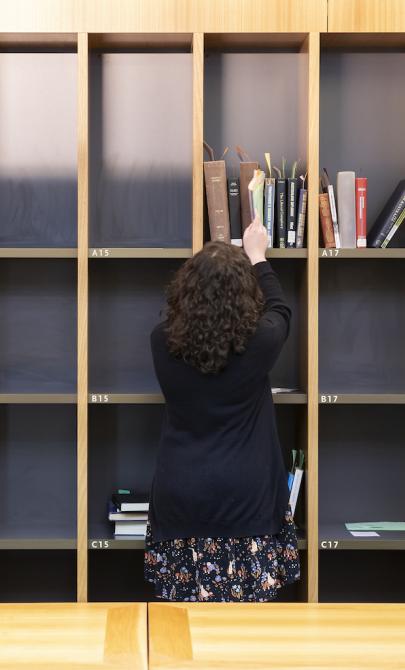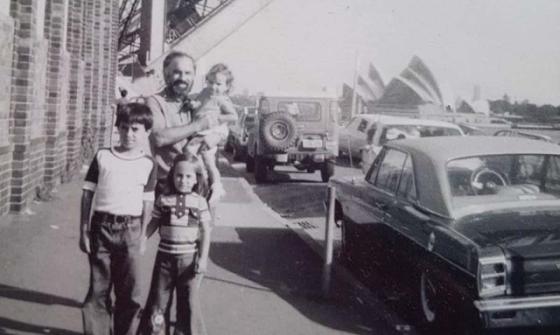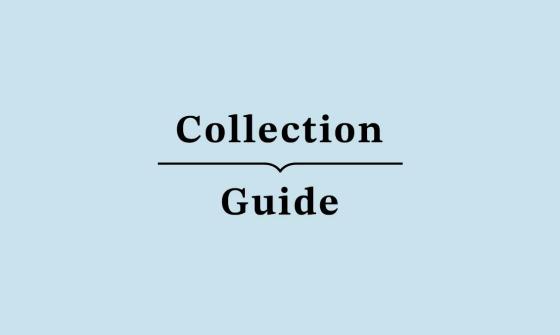De Salis Collection
Key items in the collection
Highlights from this collection demonstrate its historical significance and variety.
The De Salis Collection contains about 1600 books, mostly published in Britain in the period 1850–1920. It is a family collection assembled over a long period and the subject matter is quite broad: Greek and Latin classics, religion, moral philosophy, history, biography, politics, English and American literature, language, travel, agriculture, gardening, popular science, art and children’s books.
Authors who are well represented in the collection include:
- Thomas Carlyle
- Samuel Coleridge
- Charles Dickens
- J.A. Froude
- Oliver Wendell Holmes
- Charles Kingsley
- John Stuart Mill
- John Ruskin
- Frederick Schiller
- Samuel Smiles
- Alfred Tennyson
- W.M. Thackeray.
There is a relatively small number of Australian imprints. Among the Australian authors are:
- David Buchanan
- Alec Chisholm
- T.A. Coghlan
- Louise Mack
- Henry Parkes
- J.E. Tenison-Woods
- William Woolls.
The oldest book in the collection is an edition of the works of Cicero published in 1606.
The collection includes issues of several magazines, notably:
- All the year round (1859–67)
- Cornhill Magazine (1861–63)
- Girls Own Paper (1891–92)
- Harper's Monthly Magazine (1893–96)
- Home Circle (1849–52)
- Illustrated London News (1863–68).
Other magazines are held with the De Salis papers, such as Ladies Treasury (1865–86).
The De Salis Collection, dating from around 1840 to 1930, includes family, personal, and business correspondence from several members of the De Salis family, particularly Leopold, Nina, George, Charlotte, Mary, and Emily. It also contains poems, dance programs, menus, greeting cards, newspaper clippings, scrapbooks, photographs, books, and magazines. The pastoral records include conveyance documents (1858–90), agreements, accounts, receipts, bank books, ledgers (1851–60), a Cuppacumbalong day book (1852–61), and rainfall observations (1885–99).
George De Salis kept a detailed diary for most of his life, which provides valuable insight into the early history of the Canberra–Queanbeyan district. Microfilm copies of the diaries from 1869 to 1900 are available.
The papers of Pierce Galliard Smith include a long but incomplete series of diaries (1853–1905), along with correspondence, theological papers and sermons, financial papers, photographs, and publications.
About the De Salis family
Early life and legacy of Leopold De Salis
Leopold Fane De Salis (1816–1898) was born in Florence, Italy, to Swiss parents and educated at Eton College in England. He moved to New South Wales in 1840, where he acquired multiple properties, including Darbalara near Gundagai, Junee station, and later Cuppacumbalong. De Salis served in the Legislative Assembly in 1868–69 and in the Legislative Council from 1874 until his death. He also acquired properties in the Upper Murrumbidgee and Queensland, but the collapse of wool prices and banks in 1889 led to the loss of these assets.
Nina and George De Salis
Nina De Salis (d. 1929), Leopold’s daughter, married William Farrer in 1882. They lived at Cuppacumbalong until they built Lambrigg in 1894. Her brother, George Fane De Salis (1852–1931), was a pastoralist and briefly served in the Legislative Assembly. He married Mary, the daughter of Reverend Pierce Galliard Smith, in 1878. After losing Cuppacumbalong, they lived at Lambrigg until 1900, when they purchased Soglio, a property named after their ancestral home in Switzerland. Their four daughters lived at Soglio until the 1960s, and the property was later passed to John De Salis, George’s grandson.
The De Salis family library
The library at Cuppacumbalong was largely collected by Leopold and Nina De Salis. After it was moved to Soglio in 1900, additional books were added by George and his daughter Charlotte. Some books also came from Pierce Galliard Smith’s collection, and many contain bookplates, particularly those of Charlotte De Salis.
Background to the collection
The De Salis Collection of books and personal papers were purchased by the Library from John De Salis of Michelago in 1984–87. The diaries of George De Salis were lent for microfilming in 1976 by William De Salis of Canberra.
The books in the De Salis Collection are maintained as a formed collection and have been catalogued individually. Their call numbers begin with the prefix DESAL. The Rare Books Collection hosts Ciceronis opera omnia (1616) and L.M. Stretch, The beauties of History (1793). The Maps Collection holds the digitised copies of Whitehead's new map of Victoria (1877) and The enlarged pictorial plan of London: London in 1911 .
The papers of the De Salis family are kept together in the Manuscripts Collection. The collection, which is partly restricted, occupies 55 boxes. Use the finding aid.
A family tree of the De Salis family is held at MS 2623. The papers of Pierce Galliard Smith, which occupy 19 boxes. Use the finding aid.
The microfilm of the diaries of George De Salis is located at mfm G 20727–20733.
This guide was prepared using these references:
- John Cope, Pioneer parson of early Canberra: Rev. Pierce Galliard Smith, Minister of St John the Baptist Church, Reid, 1855–1905, Ginninderra Press, Canberra, 2006.
- W.A.F. De Salis, Some family history, Canberra and District Historical Society, Canberra, 1960.
- De Salis, Leopold Fabius Dietegan Fane (1816–1898), Australian Dictionary of Biography, vol. 4, Melbourne University Press, Melbourne, 1972, pp. 60–1.
